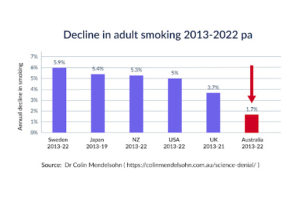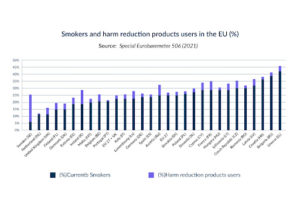For too long, many governments have relied on unsuccessful anti-smoking policies and neglected the public health revolution in front of them. Dar le WHO, still more than 8 million people die directly or indirectly annually from smoking. However, most people cannot quit immediately. But some countries are doing better than others in terms of smoking cessation. It is time to learn from them.
What differentiates successful countries from those who don’t see much progress is their attitude towards tobacco harm reduction. Countries with an open harm reduction approach and consumer-friendly regulation of those products have successfully reduced smoking rates. The invention of vaping, snus, nicotine pouches and similar products has already saved millions of lives. They are all less harmful than smoking and every smoker switching to vaping should be celebrated. Instead, many governments are fighting against this life-saving technology resulting in slow progress in the fight against smoking.

The latest World Vapers’ Alliance report highlights the best practice examples of how countries successfully reduced smoking rates. The tobacco harm reduction champions are the United Kingdom, Sweden, Japan, and New Zealand.
The United Kingdom, for example, is the most progressive country when it comes to vaping. The government and public health fully endorse vaping as a harm reduction tool, and smokers are encouraged to switch to this less harmful alternative. In the UK, smoking rates have fallen by more than 29% le deich mbliana anuas (nuair a tháinig tóir ar vapáil). I gcomparáid leis an AE, tá rátaí caitheamh tobac sa Ríocht Aontaithe tite. dhá oiread chomh tapa. Currently, only 12% of Brits are smokers, contrasting with 23% of Italians, 24% of Germans and 28% of French.
Sweden is another often overseen example of successfully fighting smoking without bans of certain products. The use of snus, vaping, and nicotine pouches have surpassed the smoking of combustible cigarettes already. Sweden is on the way to becoming the first country to reach the smoke-free goal, with a current smoking rate of 5.6%. Even though the total nicotine consumption in Sweden is within a similar range to other European countries, smoking-related mortality is much lower.

These harm-reduction champions show the world that harm reduction works, while at the same time, countries such as Australia, Germany, or Spain are failing in their pursuit to drive down smoking. These countries are losing the fight against smoking because they refuse to acknowledge scientific facts and real-world evidence. The positive results of other countries should be reason enough to change their failing policies. It is time for politicians to get on board with the harm reduction revolution – it is not a fantasy but a proven fact.
The full report can be found anseo.





3 Fhreagra